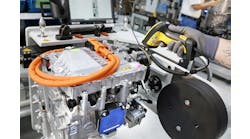The Vibration Institute offers a basic machine vibrations course in Tempe, Ariz., Apr. 20-23. The introductory course targets managers and technicians who are involved in establishing predictive maintenance programs and have less than one year of experience in measuring and analyzing machine vibrations.
The Institute also offers an advanced machinery vibration analysis course in Syria, Va., Apr. 20-23. The four-day course is aimed at analysts with more than five years of experience, who have mastered the single-channel FFT analyzer or data collector and want to learn additional analytical techniques possible with dual-channel FFT analysis.
For more information on the courses, visit the Vibration Institute at www.vibinst.org or email [email protected].
